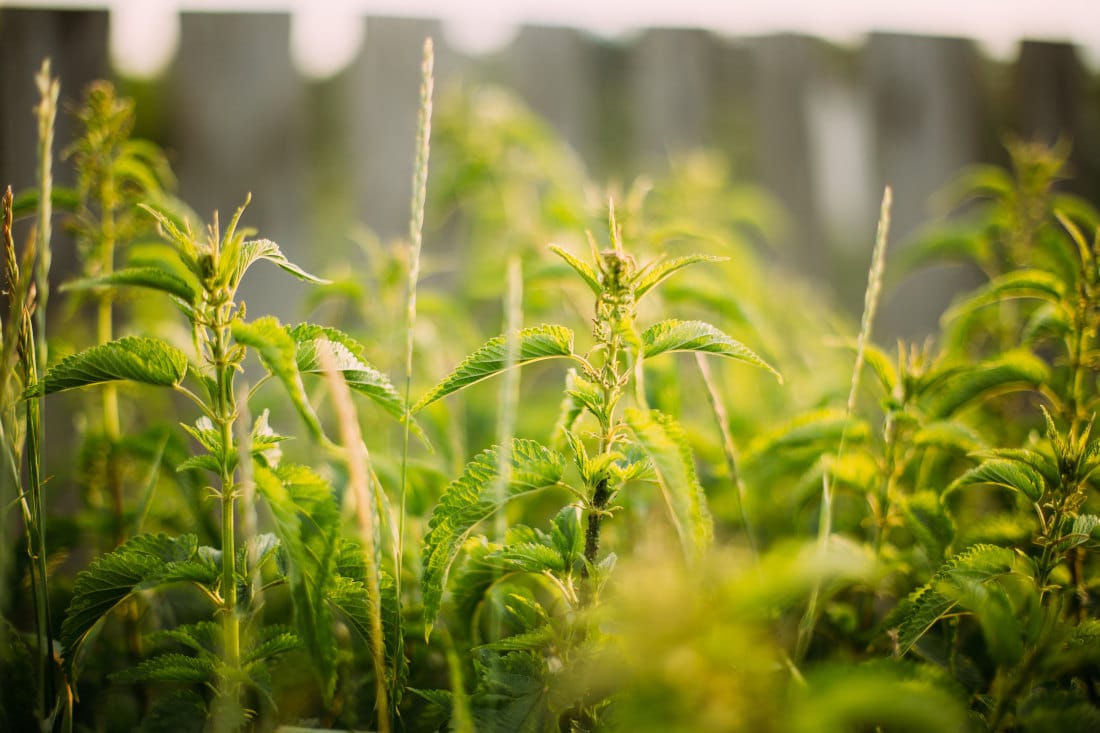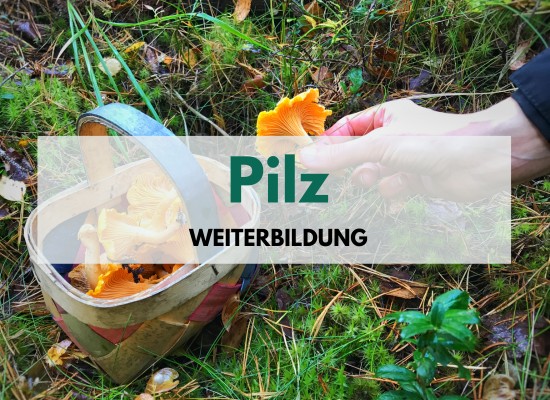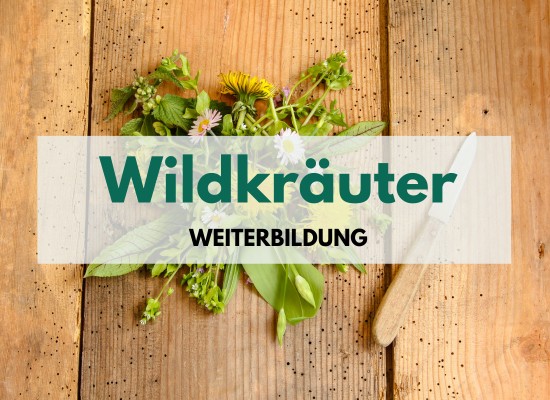Tabelle mit Inhaltsstoffen von Wildkräutern
Welche Wildkräuter haben welche Inhaltsstoffe? Im Buch „Mein WIldkräuterguide“ werden die Inhaltsstoffe dutzender Wildkräuter aufgeschlüsselt. Hier stellen wir einen Auszug der Tabelle vor. Das Buch kannst du hier im Shop kaufen.
Der Nährstoffgehalt heimischer Wildkräuter
Wie du vielleicht in unseren bisherigen Artikeln bereits erfahren hast, sind Wildkräuter kein Allheilmittel, dennoch stecken Wildkräuter voller interessanter Nährstoffe. Im Internet kursieren viele Wildkräuter Nährwerttabellen, besonders häufig um den „Superfoodcharakter“ von Wildkräutern und deren Überlegenheit gegenüber Zuchtgemüse zu unterstreichen. Im Rahmen seines Buches „mein Wildkräuterguide“ hat sich unser Autor Manuel Larbig in intensive Recherchearbeiten gestürzt , um herauszufinden, was an diesen Tabellen dran ist. Sein Ergebnis: leider nicht viel. Die allermeisten Tabellen über die Inhaltsstoffe von pflanzen geben als Quelle ein kleines Faltblatt von 1982 („Wildgemüse Nr 1182“) vom AID Infodienst Bonn an. Auf Nachfrage bei der Nachfolgeorganisation (BZfE) wird diese Quelle mittlerweile als „veraltet“ eingestuft, hinter den damaligen Analysemethoden stehe man heute nicht mehr und von einer Bezugnahme auf diese würde abgeraten. Interessant! Denn diese Quelle wird weiterhin fröhlich zitiert und die Werte munter voneinander abgeschrieben.
Doch damit ist nun Schluß, Waldsamkeit sagt den Wildkräuter Fake-News den Kampf an!
Hinweis: die Tabelle ist nur für den Privatgebrauch bestimmt. Vervielfältigung und gewerbliche Nutzung bedürfen der Genehmigung.
Unsere Weiterbildungen:

Wie unsere Wildkräuter Nährwert Tabelle zeigt, hat die Brennnessel sehr viel Vitamin C, Kalzium und Kalium.
Die Wildkräuter Nährwert Tabelle
Scrolle weit nach rechts, um alle Angaben zu entdecken.
| Name | Wiss. Artname | Kcal | H2O (%) | Protein | Kohlenhydr. | Ballastst. | Oxalat | K | Mg | Mn | Ca | Fe | P | Cu | Zn | Nitrat | Vit. C | Vit. B1 | B2 | B6 | Carotin | Quelle |
|---|---|---|---|---|---|---|---|---|---|---|---|---|---|---|---|---|---|---|---|---|---|---|
| Ampfer, Krauser | Rumex crispus | 25 | 90 | 1,8-4,57 | 34 | 76 | 4,9 | 54 | 0,43 | 25-159 | 6,3 | 1;4 | ||||||||||
| Barbarakraut | Barbarea vulg. | 21 | 82 | 5,1 | 33 | 156 | 2,3 | 81 | 130-314 | 2;6 | ||||||||||||
| Bärlauch | Allium ursinum | 16 | 89 | 2 | 2,9 | 2,18 | 22 | 0,32 | 76 | 2,9 | 50 | 0,08 | 0,27 | 45-150 | 1;2 | |||||||
| Birke, -Hänge (Blätter) | Betula pendula | 4,7 | 137 | 3,7 | 1 | |||||||||||||||||
| Bocksbart, -Wiesen | Tragopodon pratensis | 24 | 86,7 | 2,8 | 1,3 | 3,8 | 32 | 122 | 2 | 56 | 62 | 146 | 2 | |||||||||
| Borretsch | Borago officinalis | 21 - 44 | 93 | 1,2 | 214-550 | 8-52 | 0,35-1,6 | 93-344 | 2,8-3,3 | 53 | 0,05 - 0,13 | 0,2 - 0,35 | 69,2 | 35 | 0,084 | 3;7 | ||||||
| Brennnessel, große | Urtica dioica | 45 | 83 | 5,8-7,37 | 1,3 | 3,1 | 334 | 80 | 0,8-1,3 | 480-713 | 1,6-4,1 | 71-138 | 0,06-0,24 | 0,3-1 | 146 | 105-333 | 5,6 | 1;2;7 | ||||
| Brunnenkresse | Nasturtium off. | 20-33 | 88 | 1,6-4,8 | 2 | 0,3-1,4 | 276 | 26-34 | 197 | 3,1 | 41-64 | 0,28 | 17-96 | 0,08 | 0,17 | 4,9 | 2;4 | |||||
| Franzosenkraut, behaartes | Galinsoga ciliata | 19 | 88 | 3,3 | 1,5 | 64 | 0,76 | 372 | 4,8 | 52 | 0,28 | 0,5 | 137 | 90-177 | 2 | |||||||
| Fuchsschwanz, aufsteigender | Amaranthus blitum | 90-93 | 3,5 | 2,6 | 130 | 270 | 3 | 65 | 42 | 1,7 | 5;8 | |||||||||||
| Gänsedistel, -Kohl | Sonchus oleraceus | 27 | 88,7 | 2,3 | 3,3 | 3,9 | 507 | 31 | 0,46 | 156 | 0,6 | 0,05 | 0,57 | 9 | ||||||||
| Gänsefuß, weißer | Chenopodium album | 43 | 84 | 1-5,0 | 5 | 1339 | 855-1286 | 76-117 | 0,55-0,9 | 69-438 | 1,2-4,7 | 46-72 | 0,04 | 0,41-1,3 | 10-236 | 0,27 | 4,4-12,5 | 1;3;4;6;7;10 | ||||
| Giersch | Aegopodium podagraria | 39 | 82 | 1-8,4 | 0,5 | 540 | 35 | 0,65 | 132 | 2,9 | 50-128 | 0,2 | 0,24-1 | 72 | 37-142 | 2;4 | ||||||
| Glockenblume, -Rapunzel | Campanula rapunculus | 3 | 50 | 4,9 | 1 | |||||||||||||||||
| Gundermann | Glechoma hederacea | 26 | 83 | 6,1 | 0,6 - 3,5 | 57 | 1,6 | 289 | 3,7 | 72 | 0,2 | 1,3 | 176 | 230 | 2 | |||||||
| Guter Heinrich | Chenopodium bonus-henricus | 38 | 82 | 6,5 | 1,9 | 51 | 0,93 | 130 | 2,9 | 103 | 0,14 | 0,9 | 79 | 219 | 2 | |||||||
| Chiccoree | Cichorium intybus var. Foliosum | 20 | 94 | 1,2 | 2,4 | 1,2 | 27 | 198 | 13 | 0,3 | 26 | 0,74 | 26 | 0,1 | 0,26 | 15 | 8,7 | 0,058 | 0,036 | 0,048 | 3,4 | 2 |
| Kopfsalat | Lactuca sativa | 14 | 95 | 0,9 | 2,4 | 0,5-1,2 | 141-260 | 7-11 | 18-35 | 0,4-1,8 | 20-26 | 0,025 | 0,15 | 2,8-8 | 0,06 | 0,06 | 0,042 | 7;18 |
||||
| Kresse, -Garten | Lepidium Sativum | 40 | 87 | 4,2 | 2,48 | 3,5 | 550 | 214 | 2,9 | 38 | 245 | 59 | 0,15 | 0,19 | 0,3 | 2,2 | 2 | |||||
| Spinat | Spinacia oleracea | 23 | 91 | 2,86 | 3,3 | 2,2 | 364-2285 | 558 | 79 | 99 | 2,71 | 49 | 0,13 | 0,53 | 28,1 | 0,2 | 7;19;20 |
|||||
| Möhre, - Garten (Wurzel) | Daucus carota subsp. Sativus | 33-41 | 88 | 1 | 4,8 | 2,8-3,6 | 6 | 320-328 | 12-13 | 0,17 | 33-35 | 0,3-0,38 | 0,32-0,35 | 0,049 | 0,266 | 50 | 5,9-7 | 0,13-0,27 | 11 | 2;7 |
||
| Zwiebel | Allium cepa | 28-40 | 89 | 1,1 | 4,9 | 1,7 | 146 | 10 | 20-23 | 0,21-0,23 | 29-35 | 0,039 | 0,17-0,22 | 7-7,4 | 0,035 | 0,2 | 0,12-0,15 | 7;18 |
||||
| Rhabarber | Rheum undulatium | 18 | 92,7 | 0,6 | 1,4 | 3,2 | 70-1900 | 287 | 11 | 0,17 | 66 | 0,35 | 22 | 0,038 | 0,19 | 215 | 10 | 0,027 | 0,03 | 0,035 | 0,06 | 2;20 |
| Eberesche (Frucht) | Sorbus aucuparia | 85 | 71 | 1,5 | 18 | 234 | 17 | 1,6 | 42 | 1,5 | 33 | 0,09 | 0,26 | 98 | 2,4 | 2 |
| Name | Wiss. Artname | Kcal | H2O (%) | Protein | Kohlenhydr. | Ballastst. | Oxalat | K | Mg | Mn | Ca | Fe | P | Cu | Zn | Nitrat | Vit. C | Vit. B1 | B2 | B6 | Carotin | Quelle |
|---|---|---|---|---|---|---|---|---|---|---|---|---|---|---|---|---|---|---|---|---|---|---|
| Ampfer, Krauser | Rumex crispus | 25 | 90 | 1,8-4,57 | 34 | 76 | 4,9 | 54 | 0,43 | 25-159 | 6,3 | 1;4 | ||||||||||
| Barbarakraut | Barbarea vulg. | 21 | 82 | 5,1 | 33 | 156 | 2,3 | 81 | 130-314 | 2;6 | ||||||||||||
| Bärlauch | Allium ursinum | 16 | 89 | 2 | 2,9 | 2,18 | 22 | 0,32 | 76 | 2,9 | 50 | 0,08 | 0,27 | 45-150 | 1;2 | |||||||
| Birke, -Hänge (Blätter) | Betula pendula | 4,7 | 137 | 3,7 | 1 | |||||||||||||||||
| Bocksbart, -Wiesen | Tragopodon pratensis | 24 | 86,7 | 2,8 | 1,3 | 3,8 | 32 | 122 | 2 | 56 | 62 | 146 | 2 | |||||||||
| Borretsch | Borago officinalis | 21 - 44 | 93 | 1,2 | 214-550 | 8-52 | 0,35-1,6 | 93-344 | 2,8-3,3 | 53 | 0,05 - 0,13 | 0,2 - 0,35 | 69,2 | 35 | 0,084 | 3;7 | ||||||
| Brennnessel, große | Urtica dioica | 45 | 83 | 5,8-7,37 | 1,3 | 3,1 | 334 | 80 | 0,8-1,3 | 480-713 | 1,6-4,1 | 71-138 | 0,06-0,24 | 0,3-1 | 146 | 105-333 | 5,6 | 1;2;7 | ||||
| Brunnenkresse | Nasturtium off. | 20-33 | 88 | 1,6-4,8 | 2 | 0,3-1,4 | 276 | 26-34 | 197 | 3,1 | 41-64 | 0,28 | 17-96 | 0,08 | 0,17 | 4,9 | 2;4 | |||||
| Franzosenkraut, behaartes | Galinsoga ciliata | 19 | 88 | 3,3 | 1,5 | 64 | 0,76 | 372 | 4,8 | 52 | 0,28 | 0,5 | 137 | 90-177 | 2 | |||||||
| Fuchsschwanz, aufsteigender | Amaranthus blitum | 90-93 | 3,5 | 2,6 | 130 | 270 | 3 | 65 | 42 | 1,7 | 5;8 | |||||||||||
| Gänsedistel, -Kohl | Sonchus oleraceus | 27 | 88,7 | 2,3 | 3,3 | 3,9 | 507 | 31 | 0,46 | 156 | 0,6 | 0,05 | 0,57 | 9 | ||||||||
| Gänsefuß, weißer | Chenopodium album | 43 | 84 | 1-5,0 | 5 | 1339 | 855-1286 | 76-117 | 0,55-0,9 | 69-438 | 1,2-4,7 | 46-72 | 0,04 | 0,41-1,3 | 10-236 | 0,27 | 4,4-12,5 | 1;3;4;6;7;10 | ||||
| Giersch | Aegopodium podagraria | 39 | 82 | 1-8,4 | 0,5 | 540 | 35 | 0,65 | 132 | 2,9 | 50-128 | 0,2 | 0,24-1 | 72 | 37-142 | 2;4 | ||||||
| Glockenblume, -Rapunzel | Campanula rapunculus | 3 | 50 | 4,9 | 1 | |||||||||||||||||
| Gundermann | Glechoma hederacea | 26 | 83 | 6,1 | 0,6 - 3,5 | 57 | 1,6 | 289 | 3,7 | 72 | 0,2 | 1,3 | 176 | 230 | 2 | |||||||
| Guter Heinrich | Chenopodium bonus-henricus | 38 | 82 | 6,5 | 1,9 | 51 | 0,93 | 130 | 2,9 | 103 | 0,14 | 0,9 | 79 | 219 | 2 | |||||||
| Chiccoree | Cichorium intybus var. Foliosum | 20 | 94 | 1,2 | 2,4 | 1,2 | 27 | 198 | 13 | 0,3 | 26 | 0,74 | 26 | 0,1 | 0,26 | 15 | 8,7 | 0,058 | 0,036 | 0,048 | 3,4 | 2 |
| Kopfsalat | Lactuca sativa | 14 | 95 | 0,9 | 2,4 | 0,5-1,2 | 141-260 | 7-11 | 18-35 | 0,4-1,8 | 20-26 | 0,025 | 0,15 | 2,8-8 | 0,06 | 0,06 | 0,042 | 7;18 |
||||
| Kresse, -Garten | Lepidium Sativum | 40 | 87 | 4,2 | 2,48 | 3,5 | 550 | 214 | 2,9 | 38 | 245 | 59 | 0,15 | 0,19 | 0,3 | 2,2 | 2 | |||||
| Spinat | Spinacia oleracea | 23 | 91 | 2,86 | 3,3 | 2,2 | 364-2285 | 558 | 79 | 99 | 2,71 | 49 | 0,13 | 0,53 | 28,1 | 0,2 | 7;19;20 |
|||||
| Möhre, - Garten (Wurzel) | Daucus carota subsp. Sativus | 33-41 | 88 | 1 | 4,8 | 2,8-3,6 | 6 | 320-328 | 12-13 | 0,17 | 33-35 | 0,3-0,38 | 0,32-0,35 | 0,049 | 0,266 | 50 | 5,9-7 | 0,13-0,27 | 11 | 2;7 |
||
| Zwiebel | Allium cepa | 28-40 | 89 | 1,1 | 4,9 | 1,7 | 146 | 10 | 20-23 | 0,21-0,23 | 29-35 | 0,039 | 0,17-0,22 | 7-7,4 | 0,035 | 0,2 | 0,12-0,15 | 7;18 |
||||
| Rhabarber | Rheum undulatium | 18 | 92,7 | 0,6 | 1,4 | 3,2 | 70-1900 | 287 | 11 | 0,17 | 66 | 0,35 | 22 | 0,038 | 0,19 | 215 | 10 | 0,027 | 0,03 | 0,035 | 0,06 | 2;20 |
| Eberesche (Frucht) | Sorbus aucuparia | 85 | 71 | 1,5 | 18 | 234 | 17 | 1,6 | 42 | 1,5 | 33 | 0,09 | 0,26 | 98 | 2,4 | 2 |

Manuel Larbig
Mein Wildkräuterguide
Weitere Infos über den Nährwert von Wildkräutern und vieles mehr findest du in „Mein Wildkräuterguide“!
Gesundes Kraut wächst überall, man muss es nur finden. Dabei zeigt Manuel, dass es nicht nur viel Spaß macht, sich mit Wildkräutern zu beschäftigen, sondern dass diese auch gut für unsere Gesundheit sind. Und vor allem: Jeder kann lernen, Kräuter zu bestimmen.
Quellen für die Wildkräuter Nährwert Tabelle
1 Redzi, Sulejman: »Use of Wild and Semi-Wild Edible Plants inNutrition and Survival of People in 1430 Days of Siege of Sarajevo during the War in Bosniaand Herzegovina.«
2 Souci / Fachmann / Kraut Die Zusammensetzung der Lebensmittel, Nährwert-Tabellen
3 Bianco et Al: NUTRITIONAL VALUE AND NITRATE CONTENT IN EDIBLE WILD SPECIES USED IN SOUTHERN ITALY
4 Biodiversity for Food and Nutrition: http://www.b4fn.org/
5 Holland et al.: »Vegetables, Herbs and Spices. The Fifth Supplement to McCance & Widdowson’s The Composition of Foods.« Royal Society of Chemistry, 1991.
6 Zennie et al., »Ascorbic Acid and Vitamin A Content of Edible Wild Plants of Ohio and Kentucky.«, 1977.
7 FoodData Central: https://fdc.nal.usda.gov/
8 Leung et al., »Food composition table for use in Africa.«, 1991.
9 Ferreira et Al.: Wild edible plants: Nutritional and toxicological characteristics, retrieval strategies and importance for today’s society José Pinela, 2017
10 Poonia et al.: »Chenopodium album Linn: review of nutritive value and biological properties.« Journal of Food Science and Technology, 2015.
11 Guzelsoy et al.: »Nutritional Properties of some Wild Edible Plant Species in Turkey.« Anadolu, 2017.
12 W. Franke et Al: Ernährungs-Umschau 28 (1981) 187 Vitamin C-Gehalte von heimischen Wildgemüse- und Wildsalatarten
13 Vegetables and Fruits: Nutritional and Therapeutic Values von Thomas S. C. Li
14 Sundiyal et al.: »Wild edible plants of the Sikkim Himalaya: Nutritive values of selected species.«, 2004.
15 Samancioglu et al.: »Total phenolic and vitamin C content and antiradical activity evaluation of traditionally consumed wild edible vegetables from turkey.« Asia pacific Journal of clinical Nutrition, 2016
16 Roth – Giftpflanzen, Pflanzengifte
17 Noonan, SC., Savage, GP, Oxalate content of foods and its effect on humans. Asia Pacific Journal of Clinical Nutrition, 8(1), 1999, S. 64-74.
18 Vincent E. Rubatzky, Mas Yamaguchi: World Vegetables: principles, production and nutritive values
19 „Attalla et al.: »Oxalate Content Of Food: A Tangled Web.« Urology, 2014.
Kyrollis Attalla 1 , Shubha De 1 , Manoj Monga , 2014“
20 Sienera et Al.: Oxalate contents of species of the Polygonaceae, Amaranthaceae and Chenopodiaceae families, 2005








